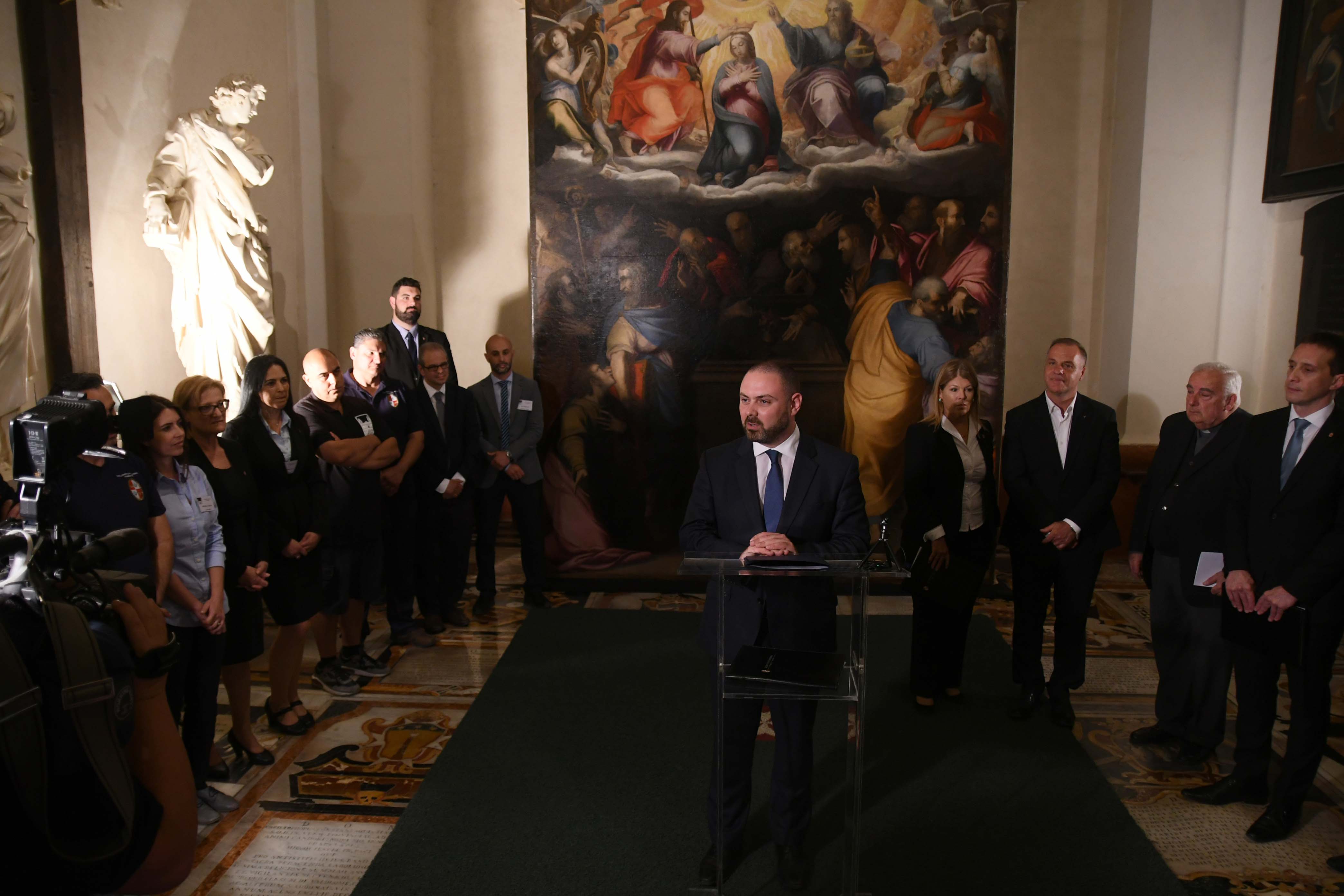-

-
The St John’s Co-Cathedral Foundation has unveiled the restoration of the Coronation of the Virgin Mary, a majestic and large painting which was in dire need of intervention.
“We pride ourselves on having a rich cultural legacy, and through the restoration of this magnificent painting we are helping to preserve and protect this legacy for future generations. During the past years, St John’s Co-Cathedral has been going through one restoration project after the other, which in turn instil greater appreciation from the community towards this splendid monument,” stated Minister for Culture Dr Owen Bonnici. The Minister commended the work being done by the Foundation and thanked all its employees for their efforts to improve and showcase the Co-Cathedral.
Wilfrid Buttigieg, President of the St John’s Co-Cathedral Foundation, explained that “One of the main responsibilities and duties of the Foundation is the effective conservation, restoration and management of this world heritage site and sacred place of worship. The retaining of the highest standards possible comes at a cost. This process is sustained from the revenue generated by incoming visitors to Malta’s most visited tourist location. The restoration of this painting has been proposed some years ago since it needed various interventions and the Foundation left no stone unturned to make sure that it is done to a highest degree. This is surely not the last painting to go through this restoration and conservation process since the Foundation has a short and long-term restoration project plan which is being followed by its employees and contractors. As part of the new Museum project we are also planning to include an in-house restoration laboratory which will also include a viewing point for visitors to be able to view and appreciate the on-going restoration works, a task which is a constant and does not ever really stop at St.John’s.”
The Pro-Rector of St John’s Co-Cathedral, Monsignor Victor Zammit Mckeon was elated that “The Coronation of the Virgin Mary has finally been restored and I am looking forward to seeing it in its pride of place hanging in the Sacristy. The restoration comes during the month of May dedicated to the Virgin Mary and during the same period where Pope Francis has established a new feast dedicated to Mary as ‘Mother of the Church’ to be celebrated on the Monday after Pentecost.”
Ms Cynthia de Giorgio Curator and CEO of the St John’s Co-Cathedral explained that: “The subject of this painting is original as it merges the assumption and the coronation of the Virgin Mary in one scene. The painting was in an advanced state of deterioration because of the movements it had sustained, especially when it had been removed from its frame and placed into storage during war time. Past interventions which had consisted of overpainted large areas covered some of the details of the iconography obscuring the original aesthetics of the composition. The layers of varnish that had been given to the painting had darkened over the years rendering the canvas surface dull and the subject difficult to comprehend. The restoration methods used in this project reversed past interventions and brought the painting close to its former condition. The process unveiled the elegant iconography of the mannerist style of this painting which can now be safely placed as a production of the late 16th century”.
Fr Charles Vella, the restorer in charge of this project, explained that this painting, measuring four metres by three, suffered from very bad conditions of conservation especially during the Second World War. During the years, the painting suffered from botched restoration applications, and as much as 40 percent of the pigment colour was lost.
The process took eleven months to complete. The canvas on the front was treated, and the old relining canvas was removed, together with dust and glues which stayed there for a long time. through time. Reversible pigments were used for retouching, and the technique was used according to restoration ethics: by using the ‘puntinato’ technique to differenciate from the original. In the end, varnish was applied as a protective measure.
Fr Vella concluded by thanking the Foundation and its employees for their immesurable help and assistance.
-

-






